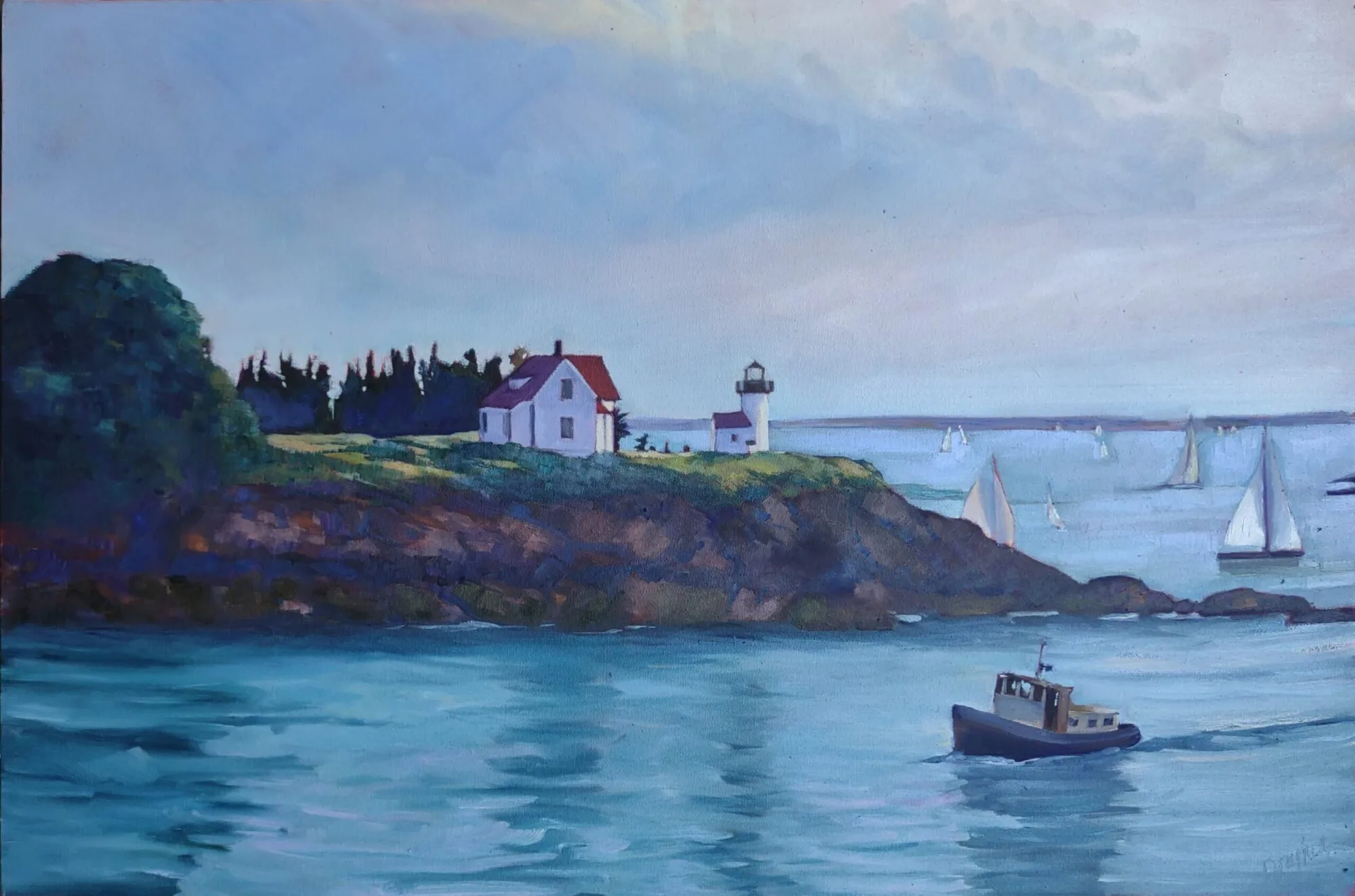Wallace MacAskill’s images of the Age of Sail became popular as we careened closer to world war.
 |
|
A Snug Harbor, Wallace MacAskill
|
My father was a WW2 Army-Air Force Photographer. He kept his service-issue Speed Graphic. I had plenty of time to mess with it as a kid. As a still camera, it was great, but capturing action was hard.
The only photo I’ve found of Wallace R. MacAskill at work shows him holding an even larger reflex camera. With it he took some of the most famous photos of the Age of Sail.
MacAskill was born in 1887 at St. Peters, Cape Breton, Nova Scotia. This is a watery place, perched on a narrow strip of land separating the Bras d’Orfrom the Atlantic. MacAskill bought his first small sailboat at age eleven. He taught himself to sail. A year later, a tourist sent him a camera. At that point, he was grounded in the two pursuits that would define his life.
MacAskill left for New York at seventeen to study photography. At that time, Alfred Stieglitz and Pictorialismdominated the New York photography scene. Pictorialism was an atmospheric, painterly style of photography. The artist strove to project emotional content with soft focus, duotone printing, and markings on the negative.
 |
|
Gray Dawn (Schooner Bluenose), Wallace MacAskill, was influenced by Pictorialism.
|
By the time MacAskill graduated in 1907, he had thoroughly absorbed this aesthetic.
Returning to Nova Scotia, he opened a studio in his home town, then one in Glace Bay. In 1915, he moved to Halifax to work for WG MacLaughlan, the city’s official military photographer. From there he moved to a job as a printer in a commercial studio.
In 1920, he moved to the Commercial Photo Service, where he met his future wife, fellow photographer Elva Abriel.
 |
| Hand-colored prints of The Road Home were popular wedding gifts. |
MacAskill was as avid a sailor as he was a photographer. He joined the Royal Nova Scotia Yacht Squadron in 1921. At the helm of his yacht Highlander (a WJ Roué design), he won the Prince of Wales Cup from 1932-34 and again in 1938. He was Vice-Commodore of the Royal Nova Scotia Yacht Squadron in 1934-35 and Commodore in 1936.
In 1929, MacAskill opened a studio under his own name in Halifax. In 1937, he published his first book, Out of Halifax, which is sadly also now out of print. This established his reputation as an art photographer.
 |
| The Bluenose stamp of 1929. |
It was MacAskill’s association with Bluenosefor which he is most remembered. This boat, designed by Roué and captained by Angus Walters, was a Canadian icon in the 1930s. MacAskill’s images were used on Canada’s 50-cent stamp of 1929 and the Canadian dime of 1937.
By WW2, Halifax’s shipyards were no longer turning out wooden fishing boats. Instead they were building destroyers for the Royal Canadian Navy, and repairing the thousands of ships damaged in the Battle of the Atlantic. As the world careened into world war, images of quaint fishing villages and schooner races seemed safe and reassuring. MacAskill’s popularity rose with the demise of his subjects.
 |
| Bluenose Sailing Away, by Wallace MacAskill |
MacAskill died at his home in Ferguson Cove, Nova Scotia, in 1956. His widow sold his negatives and business to a Halifax photographer. His images and film reels were eventually donated to the Public Archives of Nova Scotia. They have almost 5000 of them, and they are tightly controlled. You can view them here.
